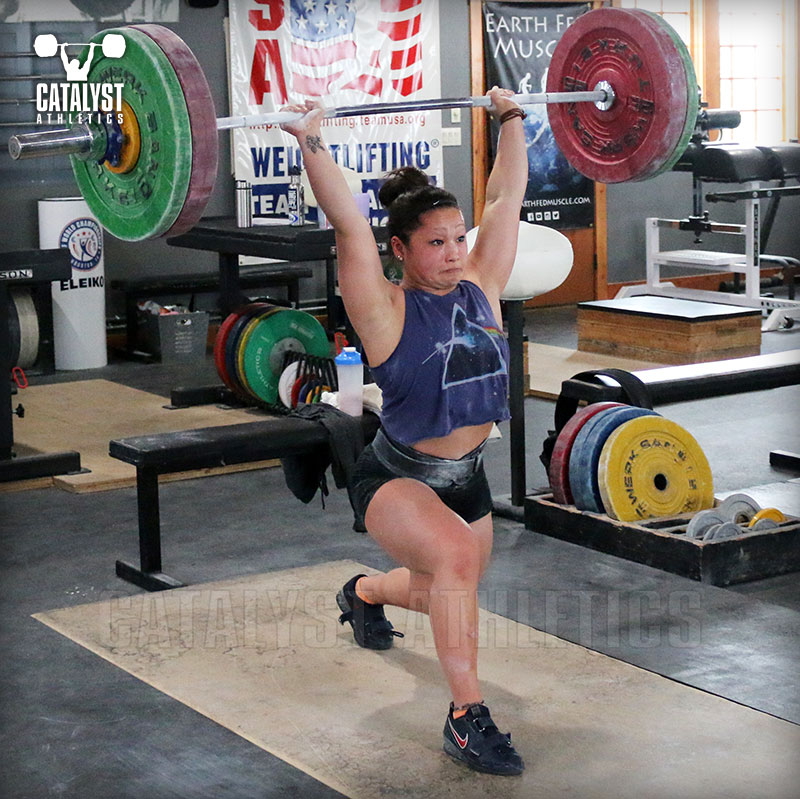Articles
Are Your Elbows Actually the Problem in Your Overhead Position?
April 19 2018

April 19 2018

In the way that overhead squat immobility often gets blamed on the shoulders when the problem is actually the lower body, often an athlete's inability to lock the elbows securely in the jerk is blamed directly on the elbows when in fact the elbows can extend perfectly well.
As the grip narrows in the overhead position (i.e. a jerk grip compared to a snatch grip), the mobility limitations of the shoulders become more influential on elbow extension. In other words, a lifter may be able to achieve perfect elbow lockout in the snatch, but have trouble in the jerk. This is a pretty simple cause and effect—if the shoulders aren't mobile enough to allow the upper arm to move into the position necessary, the elbow can’t be extended completely; in other cases, it can be, but the fight to keep it there is so tough that the elbows are often soft and rebend after initial lockout.
A quick, simple way to check whether the elbows are actually the culprit is to hold your arm at your side and extend the elbow maximally. If your extension there is limited, your elbow is the problem; if the extension at your side is greater than in the overhead position, you know the elbow isn't the source of the problem and most likely the issue is shoulder mobility.
The quickest fix is to widen your jerk grip a little; this may or may not be possible for all lifters, primarily due to how it will change the rack position, and it may not provide significant enough relief. Long term, the only solution of course is to improve shoulder mobility and strengthen elbow extension.
As the grip narrows in the overhead position (i.e. a jerk grip compared to a snatch grip), the mobility limitations of the shoulders become more influential on elbow extension. In other words, a lifter may be able to achieve perfect elbow lockout in the snatch, but have trouble in the jerk. This is a pretty simple cause and effect—if the shoulders aren't mobile enough to allow the upper arm to move into the position necessary, the elbow can’t be extended completely; in other cases, it can be, but the fight to keep it there is so tough that the elbows are often soft and rebend after initial lockout.
A quick, simple way to check whether the elbows are actually the culprit is to hold your arm at your side and extend the elbow maximally. If your extension there is limited, your elbow is the problem; if the extension at your side is greater than in the overhead position, you know the elbow isn't the source of the problem and most likely the issue is shoulder mobility.
The quickest fix is to widen your jerk grip a little; this may or may not be possible for all lifters, primarily due to how it will change the rack position, and it may not provide significant enough relief. Long term, the only solution of course is to improve shoulder mobility and strengthen elbow extension.
